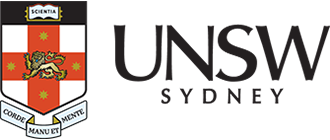Bruker Dimension SPM ICON

Description
The Bruker Dimension ICON scanning probe microscope (SPM) is a high-performance microscope widely used for high resolution measurements for materials science and nanotechnology.
The Brucker ICON operates in a scanning probe configuration and can accommodate samples of more than 100mm in diameter with a height of up to 15mm. The ICON is contained within a very effective vibration isolation unit, which allows for Z resolution of 0.3nm or better depending on the specimen. It is also equipped with proprietary ScanAsyst® image optimization technology which makes the system very user friendly and allows for consistent results.
In addition, the ICON has many advanced modules including: PeakForce Quantitative Nanomechanical Mapping (QNM) for mapping the mechanical properties of a materials surface; Magnetic Force Microscopy (MFM), which allows simultaneous mapping of the topography and magnetic domains of a specimen at the nanoscale; Kelvin Force Microscopy (KPFM) which can be used to measure the surface potential of both conductive and semi-conducting materials. Moreover, Lateral Force Microscopy (LFM) probe is used to measure the changes in frictional forces on different regions of a thin film sample. These specialised modules makes it a versatile microscope for a wide range of research fields, and it is especially complementary to both SEM and TEM.
Specifications
-
- Large sample platform which can hold up to 4inch wafer.
- Maximum sample height is 15mm
-
- Vertical resolution (z-axis) is 0.3nm or better
- Lateral resolution (x-y axis), depends on the types of AFM probe, typically around 3-5nm
- Maximum scan size is 90 by 90µm (at 0 degree scan angle)
- Z range is ± 3.5µm
-
- Contact and tapping mode
- ScanAsyst/peakforce tapping mode
- QNM, Nano-mechanical mode and force volume mapping
- Kelvin Probe Force Microscopy (KPFM, amplitude modulated)
- Magnetic Force Microscopy (MFM)
Publishing Microscopy Data Acquired on the Brucker ICON SPM
-
-
- Type of samples: thin film or bulk material
- Processing methods/heat treatment for the thin film or bulk sample
- How sample is mounted, glued to a holder or using the vacuum chuck
-
- Manufacturer: Brucker
- Model: SPM ICON
- Controller Type: Nanoscope V
-
- Type of measurement: Peakforce tapping, tapping mode
- Any advanced modes used: KPFM, MFM, LFM or QNM
- Scan size, scan rate, resolution
- Feedback setting, force set point, feedback gain
-
- Software used, Gwyddion (version) or NanoScope Analysis (version).
-
- Scalebar can be added using the AFM data processing software. X-Y scale bar can be added as a ruler to show the scan size or added as a traditional scale bar. The Z axis scale bar is added as a false colour bar.
Acknowledgement:
“The authors acknowledge the facilities and the scientific and technical assistance of Microscopy Australia at the Electron Microscope Unit (EMU) within the Mark Wainwright Analytical Centre (MWAC) at UNSW Sydney.”
Credit EMU staff: Feel free to mention EMU staff who have assisted you with your work! If staff have been involved with your work beyond basic training and support (e.g., project design, complex data/image processing, independent imaging/analysis, manuscript preparation), it may be appropriate to discuss co-authorship with the relevant staff and your supervisor.
Don’t forget to email the EMU lab manager with a copy of your publication to claim 2 hours of free microscopy time.
-
Applications
- Materials Science
- Semi-conductors
- Solar and battery materials
- Medical Sciences
Capabilities
Atomic force microscopy (AFM),
surface roughness,
magnetic force microscopy
Instrument location
Electron Microscope Unit
B72, Basement
June Griffith Building (F10)
UNSW Sydney, NSW 2052
Access – To discuss training or how your project could benefit from using this microscope, please contact the EMU using the enquiries form or email EMUAdmin@unsw.edu.au
Parent facility
Explore more instruments, facilities & services
Our infrastructure and expertise are accessible to UNSW students and staff, external researchers, government, and industry.



